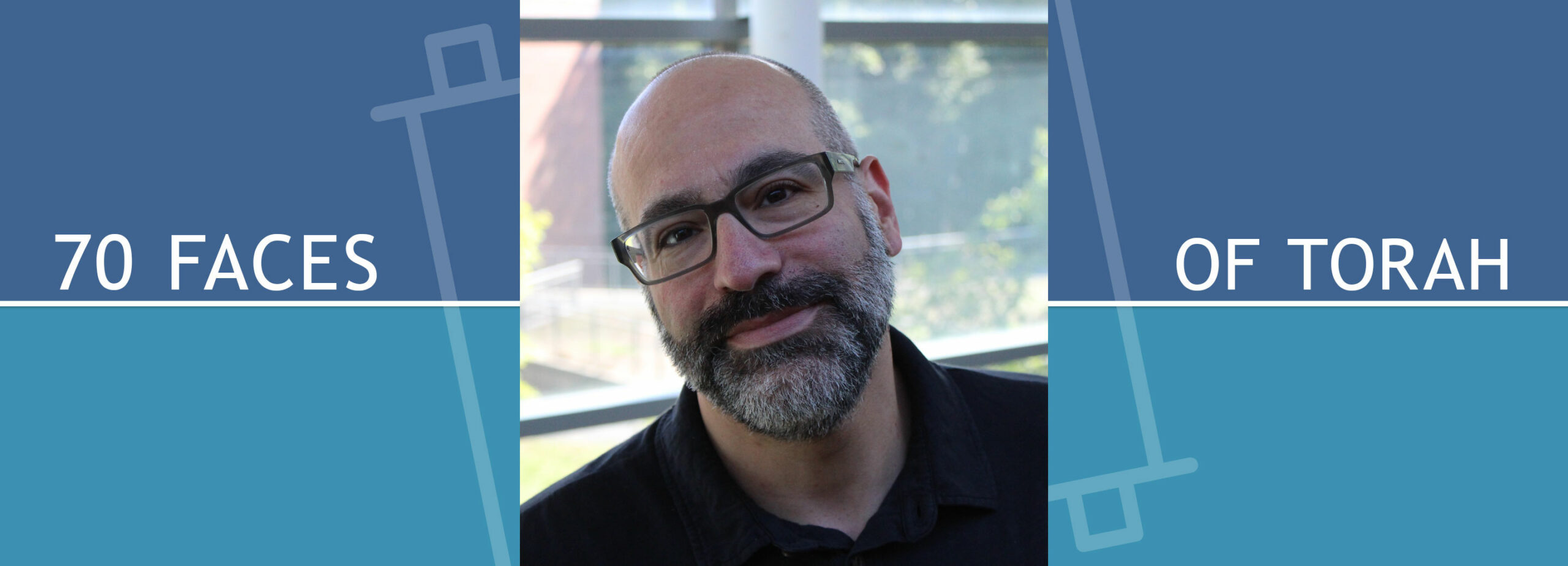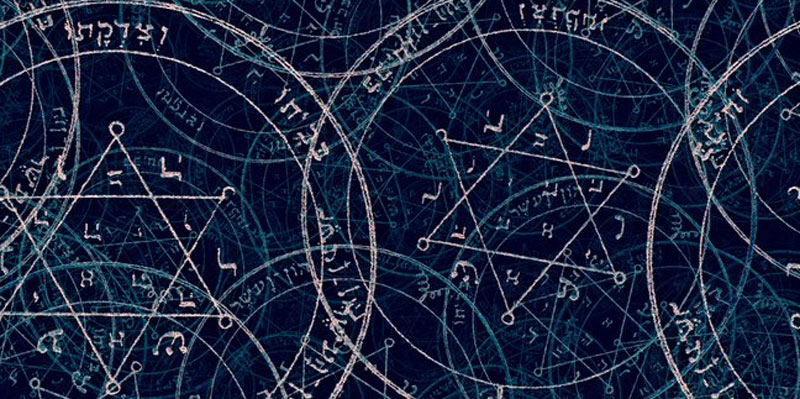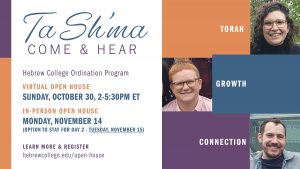Holidays Taking Hold of the Shofar: Dreams of Past & Future

Rosh Hashanah
Ever since childhood, I have been fascinated by the ritual of the sounding of the shofar (ram’s horn) during the High Holy Day season, particularly the shofar service on Rosh Hashanah.
While I could not articulate this as a boy, I was, and continue to be, intrigued by the use of this ancient, natural, and rather simple instrument in the context of modern, carefully crafted, and complex High Holy Day services.
To this day, I can visualize my father and my brother standing side-by-side, both with their heads covered by their tallitot (prayer shawls), leading our community through this evocative experience.
I can still vividly see my father holding his small, white-and-beige marbled shofar against his pursed lips, waiting for my brother to call out the traditional sequence of notes in a hushed voice from the oversized grey mahzor (prayer “cycle” or prayerbook) before him. With each call, my father, eyes closed, inhales deeply and exhales with great focus and intentionality into the shofar.
It felt to me that in these moments my father and brother were uniquely attuned to each other, to the yearnings of the community, and to the potential power of this embodied act to open us all to spiritual transformation.
Much as I love to sing, chant, and discuss the liturgy and biblical readings of the Yamim Noraim (“Days of Awe”), the elemental sounds of the shofar somehow reverberate through me differently, mysteriously calling forth thoughts and emotions that are otherwise very difficult to access.

Adding to the power of the shofar service are the many textual associations to this sacred rite I have learned over the decades—from the unsettling biblical episode of The Binding of Isaac and the appearance of the ram in the thicket (Genesis 22:1-19, a traditional Rosh Hashanah reading), to the medieval philosophical-ethical teachings of Maimonides, to the post-modern literary analyses of Avivah Zornberg.
In my preparations for the High Holy Days this year, I came upon a fascinating text about the shofar ritual and intergenerational dynamics by the 18th-century Hasidic master, Rabbi Moses Hayim Efraim of Sudilkov (the “Sudilkover”, d. 1800), author of the influential homiletical work Degel Mahaneh Efraim (“The Banner of the Camp of Efraim,” published posthumously by his son in 1810).
Appended to the large compendium of sermons on the weekly Torah portions, annual holiday cycle, and other assorted teachings, is a short dream diary the mystical preacher kept for several years.
In the very last entry, the Rebbe (“Master”) of Sudilkov records a dream he had (early December of 1784) involving his late and revered grandfather, Israel ben Eliezer, The Ba’al Shem Tov (d. 1760), the first great spiritual personality of the Eastern European Hasidic movement.
Rabbi Moses Hayim opens his diary entry as follows:
On Thursday night of the week of the Torah portion of Va’Yeshev (Genesis 37:1-40:23) … I beheld in a dream my master and elder, my grandfather, ascending the synagogue platform. He took a shofar in hand and proceeded to sound the traditional sequence of notes. Before each set of sounds, however, he called out the notes himself.
The Sudilkover continues by stating that as he watches the Ba’al Shem Tov, he is thoroughly confused about his own role in this drama:
I stood bewildered as to what I should do, since he was calling out the sounds and blowing the shofar himself!”
Just then, his grandfather summons him to the platform, albeit in an unexpected way:
He called out “ya’amod” (arise) as is done when calling a person to the Torah. I went up to the platform, stood next to the wide end of the shofar, and recited a blessing, as one does when approaching the Torah scroll.
Our preacher does not specify what the words of his blessing were—did he recite the traditional shofar blessing? Based on the ensuing details in the diary entry, though, this ritualized exchange with his grandfather was clearly transformational:
Lo and behold, I found myself standing inside the shofar, as a sound came forth from it.
The call and response between the Ba’al Shem Tov—who was renowned for his mystical and magical abilities—and Rabbi Moses Hayim, moved the latter from being a bewildered outsider to the very center of the shofar experience. So much so that he was now nestled inside the horn itself, feeling the force of the blast with every fiber of his being as it rushed through the instrument.
This intriguing moment in the dream calls to mind the scene of the prophet Jonah in the belly of the great sea creature, which is traditionally read on Yom Kippur. It is in the hollow of the mighty fish that God’s reluctant messenger cries out to the Divine, and from which Jonah goes forth to the “great city of Nineveh” to engage the people in a collective process of teshuvah.
Without saying anything more about his wild voyage in and out of the shofar, the Sudilkover continues his narration as follows:
After this, I took the shofar in hand and went to my home, where I sounded it myself.
Empowered by this extraordinary experience inside the horn, Rabbi Moses Hayim takes hold of the shofar, leaves the synagogue, and goes to his own home to sound it.
There is no mention of the Ba’al Shem Tov granting him permission to do so, or of him even bidding farewell to the Sudilkover. It is, as if, with a wink and a smile, Zeide (“Grandfather” in Yiddish) recedes, knowing that his grandson is now prepared to carry out this sacred ritual independently, having truly immersed himself in this ancient and mysterious prayer practice.
Surely Rabbi Moshe Hayim studied and sought to apply various mystical teachings about the power of the shofar long before this experience. Now, however, he seems to embody these insights more fully.
At this point in the dream diary, the preacher—using Kabbalistic terminology—offers a brief interpretation of the preceding events. He states confidently that his shofar performance have opened the heavens and drawn forth divine blessing upon him and many others.
Importantly, the Sudilkover includes two more brief snippets from dreams he had the following morning and the next night.
As night turned to day, I dreamed again: This time, I saw myself wearing a kittel, a festive white robe embroidered with rows of silver and gold—it was a truly “regal garment” (see Esther 8:15).
It seems that our preacher has journeyed in this dreamscape through the High Holy Days. He first sounds the shofar on Rosh Hashanah, and now dons the special white robe or kittel worn on Yom Kippur (and a few other special occasions).
The depiction of the robe as being both white (a sign of purity) and decorated with silver and gold seems to indicate that the Rabbi Moshe Hayim has undergone an additional transformation. Similar to the biblical figure of Mordecai in the Purim story, he dresses in royal garb. While we do not know who else sees our preacher in his finery, he clearly sees himself as a ben Melekh, a person of spiritual nobility (“a child of the King,” see, for example, Exodus 4:22, Deuteronomy 32:6, Hosea 1:10).
The use of the term “regal” (malkhut) to describe the kittel also suggests that he feels the indwelling presence of the Divine—called Malkhut in Kabbalistic tradition—surrounding, filling, and emanating from him (as he did inside the shofar).
Given the flow of the dream sequence, this brief scene seems to confirm the Sudilkover’s emergence as an independent and inspired spiritual actor, following in the footsteps of his grandfather and a host of other visionaries going all the way back to biblical times.
Interestingly, Rabbi Moses Hayim did forge his own leadership, one different from his renowned elder and teacher. While the Ba’al Shem Tov served as a folk healer and an oral teacher, who engaged in various public affairs, the Sudilkover evolved into a more retiring scholarly teacher and preacher, who is remembered largely for his writings.
In one last act of time travel, the rabbi states that the same Friday night he saw in a dream (the third in this sequence) that he was celebrating Shemini Atzeret, the last day of the fall holiday season.
Fittingly, his grandfather reappears in this scene:
Not only did I see myself rejoicing greatly, but so too was my master and elder, my grandfather.
The Ba’al Shem Tov and the Sudilkover, now both full initiates into the mysteries of the shofar practice, celebrate this sacred occasion together.
Rabbi Moses Hayim then adds a second interpretive note, reiterating that his visions all point to a “sweetening of negative decrees” (as the mystics refer to it) at this season of divine judgment, of renewed blessing for his people, and a future time global salvation.
With that, the Hasidic master ends his final dream entry—and his entire book of teachings—having taken us on a journey from waking to dream consciousness and from December 1784 back through the course of the fall Jewish holidays.
In keeping with various Jewish mystical teachings, he seems to have extended the period of teshuvah—return, repair, and renewal—to Shemini Atzeret or even to the edge of Hanukkah (which, in 1784, was celebrated just one week after the sequence of dreams) by revisiting his role in the sacred rites of this season.
As we move closer to Rosh Hashanah, Rabbi Moshe Hayim’s dream log invites us to consider several interrelated matters at this liminal time:
What High Holy Day rituals do we find particularly meaningful—at home, in the synagogue, in nature? How are these associations related to experiences with loved ones, past and present? How might the sounding of the shofar (or other practices) open us to different states of consciousness and move us to action? As we envision our lives in the coming year, what can we let go, what requires revisiting, and what can we attend to now?
May our efforts at teshuvah during these Days of Awe and beyond inspire us to fulfill the enduring dream of sounding the “Great Shofar” of healing and wholeness (Isaiah 13:27).
Rabbi Or N. Rose is the founding director of the Miller Center for Interreligious Learning & Leadership of Hebrew College. He currently working on two edited volumes: The Book of Psalms Here & Now: Multifaith Voices (Paraclete Press, 2023), and With the Best of Intentions: Interreligious Mistakes & Unexpected Learnings (Orbis 2023, with Lucinda Allen Mosher and Elinore J. Pierce).
If you or someone you know is considering the rabbinate, please join us or share information about our fall Open Houses (virtual and in-person). Learn more and register here.




